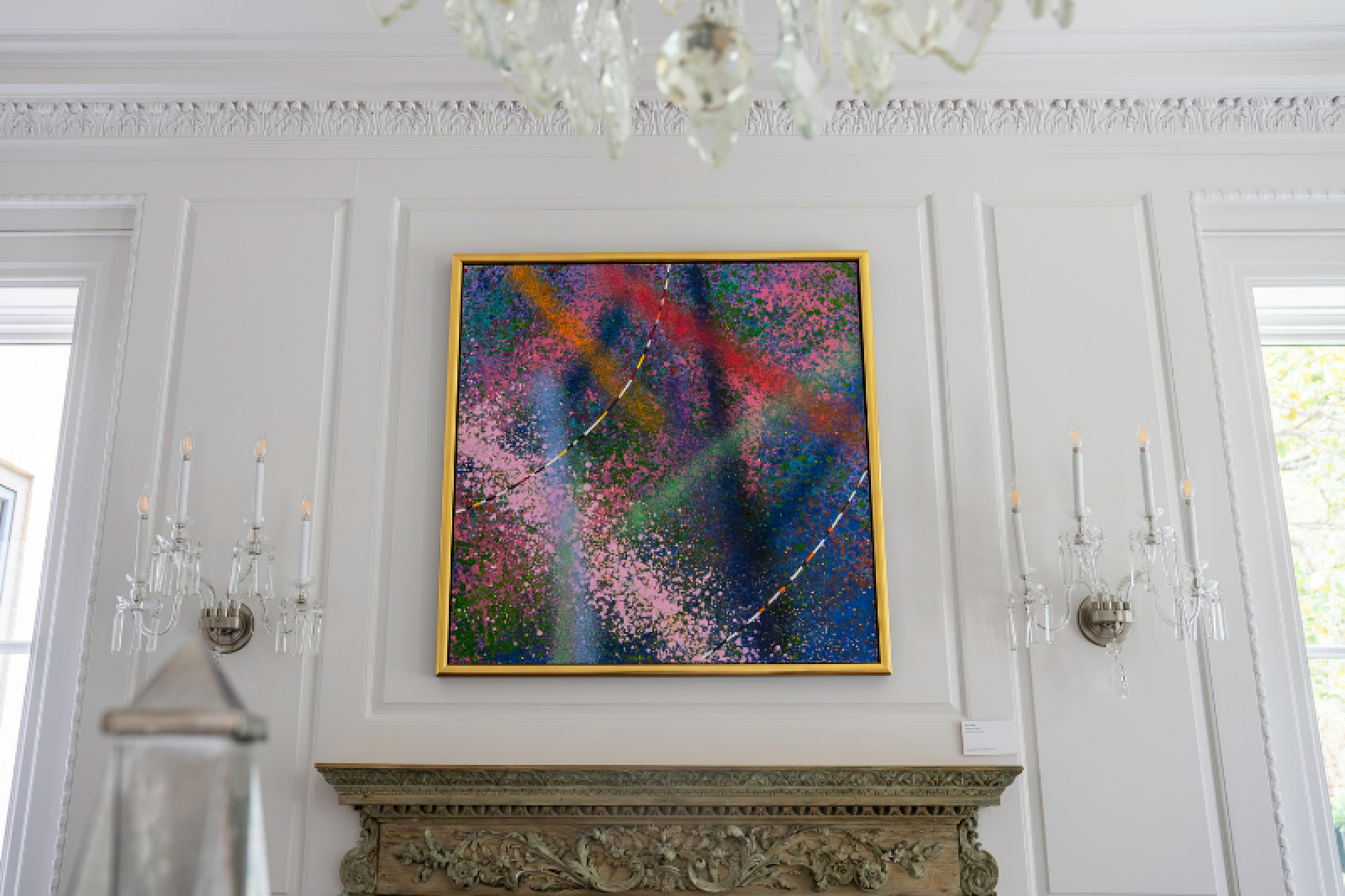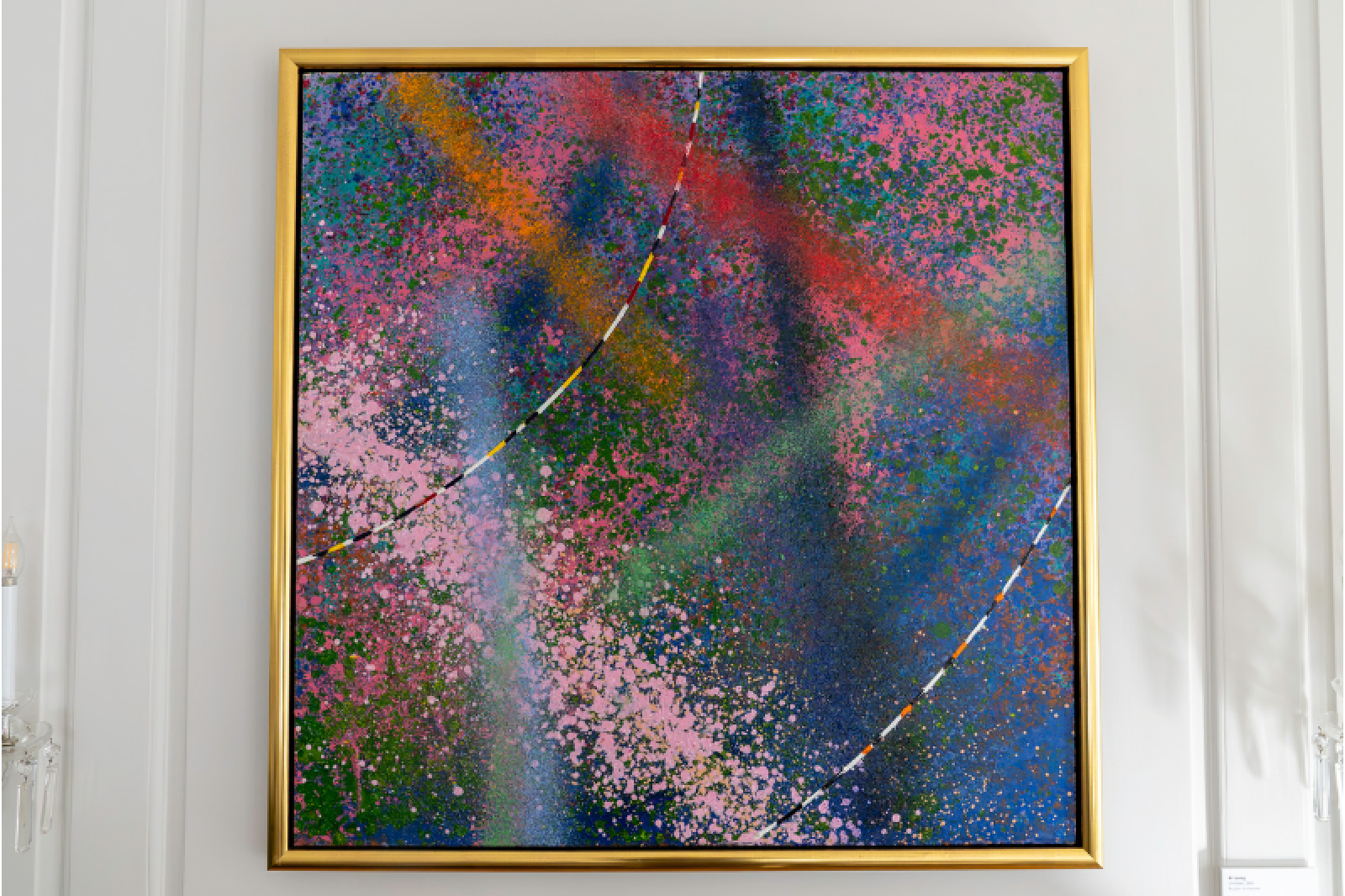Alvin D. Loving Jr.
Untitled, 1981
Acrylic on canvas
Wiess House
Courtesy of the Joyner/Giuffrida Collection
Celebrated for his lifelong experimentation with color, line, and space, Alvin D. Loving Jr. was committed to creating art that addressed both formal creative experimentation and sociopolitical issues. In 1969, shortly after relocating to New York from Detroit, Loving became the first African American artist to be featured in a solo exhibition at the Whitney Museum of American Art. By 1971, Loving began cutting up his paintings and creating fabric assemblages, citing the work of artist Romare Bearden (1911–1988) and an exhibition of American quilts at the Whitney as central to the development of his torn canvas constructions. The artist later explained, “the decision to move away from [a] rigid formalist view had to do with whether there is a Black art and what it looks like.”
Championed as a leader of Black abstraction, Loving continued to explore the relationship between color and space, experimenting with paint applications, materials, and shapes throughout his lifetime. In the 1980s he began to integrate radial, spiral motifs into his work as a symbol of growth and the continuation of life. Untitled features layers of vivid colors and concentric, overlapping lines. The painting is from the Wild Goose Lake series, which may allude to Goose Lake in Michigan, Loving’s home state. The interplay between geometric and organic shapes imbues the composition with a rhythmic cadence found in nature, echoing ripples of light across the surface of water.
About the artist: Alvin “Al” D. Loving Jr. (b. 1935, Detroit, MI, d. 2005, New York, NY) earned his BA in fine arts from the University of Illinois (1963) and his MA in fine arts from the University of Michigan (1965). In 1968 he relocated to New York City and taught at City College from 1988 to 1996. Loving’s work has been exhibited widely and is represented in numerous public collections, including the Whitney Museum of American Art, New York; the Metropolitan Museum of Art, New York; the Studio Museum in Harlem, New York; the Philadelphia Museum of Art, Philadelphia, PA; and the Detroit Institute of Arts, Detroit, MI, among others. He was the recipient of a Guggenheim Fellowship (1986) and several National Endowment for the Arts fellowships (1970, 1974, and 1984).






